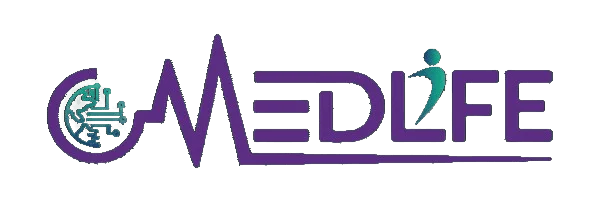Healthcare compliance has always been a critical aspect of pediatric practice management, but in 2025, the regulatory landscape has become increasingly complex. With heightened scrutiny from federal agencies, evolving payer policies, and significant penalties for non-compliance, pediatric practices must prioritize billing compliance as a cornerstone of their operations.
This comprehensive guide explores the latest regulations affecting pediatric billing compliance, practical strategies for maintaining compliance, and how professional billing partners can help navigate this challenging environment.
Recent HIPAA and CMS Updates Impacting Pediatric Practices
The past year has brought significant regulatory changes that directly affect pediatric billing operations. Understanding these updates is essential for maintaining compliance and avoiding penalties.
HIPAA Compliance Evolution
Recent HIPAA modifications have introduced new requirements that pediatric practices must address:
- Enhanced Patient Access Requirements: The latest HIPAA updates have expanded patients’ rights to access their health information, including parental/guardian access to minors’ records with important exceptions for sensitive services.
- Strengthened Information Blocking Provisions: New rules prohibit practices from implementing policies that unreasonably restrict the exchange of health information, with specific implications for adolescent confidentiality and parental access rights.
- Updated Security Risk Assessment Requirements: More stringent technical safeguard requirements now apply to pediatric EHR systems, particularly regarding access controls for sensitive adolescent health information.
- Telehealth Privacy Standards: Permanent post-pandemic telehealth regulations include specific privacy requirements for virtual pediatric visits, affecting how these services are documented and billed.
CMS Regulatory Changes
The Centers for Medicare and Medicaid Services has implemented several changes specifically affecting pediatric billing:
- Medicaid and CHIP Program Updates: New documentation requirements for Early and Periodic Screening, Diagnostic, and Treatment (EPSDT) services require more comprehensive recording of screenings and follow-up plans.
- Value-Based Care Transitions: Pediatric Alternative Payment Models (APMs) have introduced new quality metrics and reporting requirements that affect reimbursement.
- Telehealth Service Coverage Changes: Permanent coverage for specific pediatric telehealth services has been established, but with stringent documentation requirements to demonstrate medical necessity.
- Revised E/M Documentation Guidelines: Updates to Evaluation and Management (E/M) documentation guidelines have changed how pediatric visits are coded and billed, particularly for complex cases.
- Enhanced National Correct Coding Initiative (NCCI) Edits: More stringent bundling requirements affect how pediatric procedures and services can be billed together.
Staying Current with Evolving Payer Requirements
Beyond federal regulations, pediatric practices must navigate an increasingly complex landscape of payer-specific requirements.
Commercial Payer Policy Trends
Major private insurers have implemented significant policy changes:
- Prior Authorization Expansion: Many insurers have expanded prior authorization requirements for pediatric specialty care, developmental therapies, and certain medications.
- Medical Necessity Documentation: Heightened requirements for demonstrating medical necessity, particularly for behavioral health services, developmental screenings, and specialized treatments.
- Claim Editing Software Updates: More sophisticated claim editing algorithms are flagging pediatric-specific coding patterns for review.
- Telehealth Reimbursement Policies: Varied approaches to telehealth coverage create a complex patchwork of requirements that differ significantly by payer.
- Vaccine Administration Payment Policies: Changes to how vaccine administration is reimbursed, particularly for combination vaccines and counseling components.
Medicaid and CHIP Compliance Considerations
State-administered programs present unique compliance challenges:
- State-by-State Variations: Increasing divergence in coverage policies, documentation requirements, and reimbursement methodologies across state Medicaid programs.
- Enhanced Program Integrity Measures: Stepped-up audit activities focusing on pediatric providers, particularly regarding EPSDT services and developmental screenings.
- Managed Medicaid Complexity: The growth of Medicaid managed care organizations has created multiple sets of requirements within single state programs.
- Social Determinants of Health Documentation: New requirements for screening and documenting social determinants of health affecting pediatric patients.
- Pediatric Mental Health Integration Requirements: Specific documentation standards for integrated behavioral health services in primary pediatric care.
Proactive Compliance Strategies
To stay ahead of evolving payer requirements, leading pediatric practices are implementing:
- Payer Policy Monitoring Systems: Automated tracking of policy updates and changes across all contracted payers.
- Pre-Submission Claim Review Protocols: Structured processes to verify compliance with current payer requirements before claim submission.
- Payer-Specific Documentation Templates: EHR templates customized to capture the specific elements required by different payers.
- Regular Payer Contract Analysis: Systematic review of payer contracts to identify compliance obligations and reimbursement opportunities.
- Staff Education Programs: Ongoing training focused on payer-specific documentation and billing requirements.
Building Audit Readiness into Daily Operations
With increased audit activity from both government and private payers, pediatric practices must develop a culture of audit readiness.
Understanding the Current Audit Landscape
Pediatric practices face several types of potential audits:
- Targeted Probe and Educate (TPE) Reviews: Focused Medicare reviews examining specific services with high error rates.
- Medicaid RAC Audits: Recovery Audit Contractor reviews of Medicaid claims, often focusing on pediatric-specific services.
- Commercial Payer Audits: Intensified review activities from private insurers, particularly for high-cost services and procedures.
- HIPAA Compliance Audits: Office for Civil Rights investigations of privacy and security practices.
- OIG Work Plan Initiatives: Targeted investigations based on the Office of Inspector General’s annual priorities.
How Professional Billing Partners Ensure Compliance
Many pediatric practices find that partnering with specialized billing services significantly enhances their compliance posture.
Expertise-Driven Compliance Management
Professional billing partners offer:
- Regulatory Monitoring and Updates: Dedicated compliance teams that track and interpret changing regulations relevant to pediatric billing.
- Pediatric-Specific Coding Expertise: Specialized knowledge of pediatric coding nuances and compliance requirements.
- Documentation Improvement Programs: Structured feedback to providers on documentation gaps that create compliance risks.
- Automated Compliance Checks: Technology solutions that flag potential compliance issues before claim submission.
- Audit Response Support: Expert assistance with documentation requests and appeals during external audits.
Technology Solutions for Compliance
Advanced billing services leverage technology to enhance compliance:
- AI-Powered Claim Scrubbing: Machine learning algorithms that identify potential compliance issues based on historical patterns and current regulations.
- Real-Time Eligibility Verification: Automated systems that reduce compliance risks associated with coverage errors.
- Documentation Analysis Tools: Software that evaluates documentation completeness against regulatory requirements.
- Compliance Dashboards: Real-time visibility into key compliance metrics and potential risk areas.
- Secure Communication Platforms: HIPAA-compliant channels for exchanging sensitive information regarding documentation questions.
Implementing a Comprehensive Compliance Program
Whether managing billing in-house or partnering with pediatric billing experts, every pediatric practice should maintain a structured compliance program.
Essential Compliance Program Elements
An effective pediatric billing compliance program includes:
- Written Policies and Procedures: Comprehensive documentation of medical billing and coding policies specific to pediatric services.
- Designated Compliance Officer: A team member responsible for overseeing compliance activities and addressing concerns.
- Staff Training Program: Regular education on compliance requirements relevant to each role.
- Communication Channels: Clear processes for reporting potential compliance issues without fear of retaliation.
- Monitoring and Auditing: Regular internal reviews to identify and address potential problems.
- Consistent Disciplinary Guidelines: Fair and uniform standards for addressing non-compliance.
- Corrective Action Protocols: Systematic approaches to resolving identified compliance issues.


